Copy of Shelter Dog Training - Complete Course
-
Section 1: OVERVIEW & FUNDAMENTALS
Welcome Lectures16 Video Topics-
Course Agreement & Course Manual
-
Introduction & Mission Statement
-
The Genetic Makeup of the Dog
-
Pet Dogs vs Shelter Dogs
-
Why Dogs End Up in Shelters
-
Understanding Breeds
-
Shelter Mix Breakdown
-
Mitigating Injuries
-
Blueprint of Dog Drives
-
Using Treats / Food As a Reward
-
Engagement Training
-
Training Methods
-
Canine Body Language
-
Spatial Pressure
-
Correction vs Punishment Intro
-
Understanding Playgroup Basics
-
Course Agreement & Course Manual
-
Section 2: Introduction / TheoryCommunicating with Dogs1 Video Topic
-
Understanding the Genetic Makeup of the Dog1 Video Topic
-
What Makes Shelter Dogs Different2 Video Topics
-
The Anatomy of a Dog1 Quiz
-
Section 3: GETTING STARTEDThe Various Groups / Breeds of Dogs4 Video Topics
-
The Shelter Mix Breakdown1 Video Topic
-
The Blueprint of the Dog1 Video Topic
-
Anthropomorphism1 Video Topic|1 Quiz
-
Section 4: SafetyMitigating Injuries2 Video Topics
-
Canine Body Language1 Video Topic
-
Spatial Pressure1 Video Topic
-
Radius of Temperament1 Video Topic|1 Quiz
-
Section 5: The BASICS OF TRAININGBonding Through Training2 Video Topics
-
Luring and Shaping Behaviors5 Video Topics
-
Engagement Training4 Video Topics
-
Using Food as a Reward1 Video Topic
-
Different Training Methods1 Video Topic|1 Quiz
-
Section 6: UNDERSTANDING DOGS THROUGH TRAININGEngagement Training Continued5 Video Topics
-
Recall Training5 Video Topics
-
Corrections vs Punishment1 Video Topic
-
Long Line Training5 Video Topics|1 Quiz
-
SECTION 7: USING THE LEASH & LONG LINEHow to Use a Leash7 Video Topics
-
Long Line Training - Part 26 Video Topics|1 Quiz
-
Section 8: HOW TRAINING SAVES LIVESThe Canine Good Citizen5 Video Topics
-
Basic Obedience4 Video Topics
-
Teaching the Leave It Command4 Video Topics
-
The Place Command3 Video Topics|1 Quiz
-
Section 9: Building ConfidenceBuilding Confidence3 Video Topics
-
Touch Sensitivity1 Video Topic
-
Fear Aggression1 Video Topic
-
Progressive Desensitization1 Video Topic|1 Quiz
-
Section 10: Getting Dogs Around other DogsDog to Dog Introductions10 Video Topics
-
Leash Dropping1 Video Topic|1 Quiz
-
Section 11: Playgroup TrainingWhat is a Structured and Managed Playgroup2 Video Topics
-
Beginning and Structuring a Playgroup4 Video Topics
-
What Makes Playgrounds Safe vs Dangerous3 Video Topics
-
How Playgroups Benefit Dogs in Shelters2 Video Topics|1 Quiz
-
Section 12: Behavior ObservationsUnderstanding What You See5 Video Topics
-
Defining Behaviors3 Video Topics
-
Reading Dogs3 Video Topics|1 Quiz
-
SECTION 13: PROBLEM SOLVINGHigh Drive Dogs2 Video Topics
-
Mouthy Dogs1 Video Topic
-
Barrier Aggression Examples4 Video Topics
-
Fear Issues3 Video Topics
-
Leash Biting2 Video Topics|1 Quiz
-
SECTION 14: CORRECTIONS IN DOG TRAINING - Part 1Corrections Save Lives6 Video Topics|1 Quiz
-
Section 15: Corrections in Dog Training - Part 2The Proper Use of Corrections7 Video Topics|1 Quiz
Groups
-
active 8 hours ago
-
active 20 hours ago
-
active 20 hours ago
-
Member Forum
Latest updates
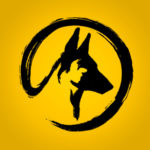
Andrew posted an update 2 days ago
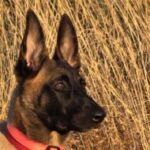
Lamprini posted an update 3 days ago

Robert posted an update 3 days ago
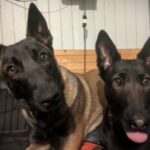
Tommy posted an update 3 days ago

Tommy posted an update 4 days ago
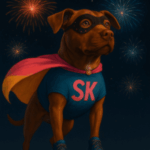
Shawn posted an update 5 days ago
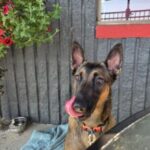
Liz posted an update 5 days ago

Tommy posted an update a week ago
Groups of Dogs
The following is a partial list designed to familiarize you with some of the inherent traits that were bred into dogs for specific purposes. You should be aware of the genetic makeup of breeds that will help you better understand the dogs you may deal with. The AKC website is a great resource for learning more about breeds, drive and classifications of dogs.
Herding Dogs is the group that was previously listed within the working dogs but has spun off. They are generally dogs that are used to control movement of other animals such as sheep, cows and more. Members of this group include most Shepherds, Cattle Dogs, Briards, Corgis, Collies, Sheepdogs. These dogs will generally show a higher degree of prey drive than other dogs. Because of this, they will have a higher likelihood to chase people, children, cats, bikes, skateboards and more.
Hounds share the common ancestry of hunting dogs. They generally have an acute sense of smell and generally have high stamina. Members of this group include Afghans, Coonhounds, Basenjis, Beagles, Dachshunds, Ridgebacks, Salukis. These dogs will often be very active and will need an outlet for their physical energy, or they may become destructive.
Non-Sporting Dogs are a diverse group since they don’t share a common personality or overall appearance. Members of this group include everything from Eskimos, Bichons, Terriers, Bulldogs, Sharpei Chows, Dalmations, Poodles and some Terriers. Most of these dogs will be lower in energy than the hounds or herding dogs and will be better choices for less active people and situations.
Sporting Dogs are naturally active and alert. They are great companions and have nice overall personalities. Dogs in this group require regular exercise and stimulation. Some Sporting Dogs are: Spaniels, Retrievers, Setters, Vizslas, and Weimaraners. Much like the herding and hounds, Sporting Dogs will require more exercise and work to keep them occupied—if bored, they can also become destructive either to themselves or to their surroundings.
Terriers are feisty, energetic dogs that may range in most every size from small to very large. Their ancestors were bred to hunt and kill vermin. They can make great pets but are known to have little tolerance for other animals, including other dogs. Members of the terrier group include Bull Terriers, Norwich Terriers, Fox Terriers, Rat Terriers, Staffordshire Terriers, Airedale Terriers. As stated, these dogs have a tenacity to hunt things out, they are very stubborn and require someone with good dog handling skills to prevent problems.
Toy Group Dogs are generally smaller dogs. Although there are small dogs in other groups the toy group’s sole functionality is nothing more than to be delightful pets. They include Chihuahuas, Havanese, Brussels Griffon, Maltese, Pomeranians, Pugs, Yorkies. These dogs are often lap-dogs with little need for exercise, yet they still do need walks and some interaction.
Working Dogs were bred to perform jobs such as guarding, sled pulling, water rescues and more. They are hearty dogs that require training (as do all dogs) because of their size and drives. They include Akitas, Anatolian Shepherds, Bernese Mountain Dogs, Boerbels, Bullmastiffs, Cane Corsos, Dobermans, Schnauzers, Great Danes, Portuguese Water Dogs, Rottweilers, Samoyeds, Huskies. Dogs in the working dog category should go with skilled handlers. Some of the characteristics may be diluted if they are mixed with other breeds, yet some characteristics may also be increased. As with all of the dogs, judge each dog as an individual and not as a generalization.

